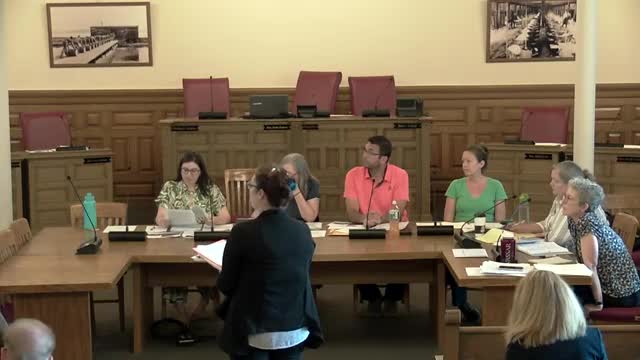Historic home loses integrity amid modernization changes
June 20, 2024 | Syracuse City, Onondaga County, New York

This article was created by AI summarizing key points discussed. AI makes mistakes, so for full details and context, please refer to the video of the full meeting. Please report any errors so we can fix them. Report an error »

In a recent government meeting, discussions centered around the historical integrity of a property located at 727 Comstock, previously owned by notable attorney Charles Esterbrook. A review of historical photographs revealed significant alterations to the house's architectural features since Esterbrook's residency. Key elements such as balustrades, decorative entablature, and the widow's walk have been removed, while modern windows and asphalt shingles have replaced original materials.
The analysis highlighted that the current state of the property lacks sufficient distinctive elements and original materials to meet the criteria for historic designation under both National Register guidance and local zoning ordinances. The building's transformation has diminished its ability to convey its historic significance, as it no longer reflects the characteristics of an upper middle-class residence from Esterbrook's era.
Furthermore, the meeting addressed the criteria for historic significance, noting that Esterbrook's contributions as a business attorney do not meet the threshold for historical importance. A search of legal records yielded no significant findings related to his work, reinforcing the conclusion that the property does not qualify as historically significant.
Overall, the discussions underscored the challenges of preserving historical integrity in the face of modern renovations, emphasizing the need for properties to retain distinctive architectural features to be considered historically relevant.
The analysis highlighted that the current state of the property lacks sufficient distinctive elements and original materials to meet the criteria for historic designation under both National Register guidance and local zoning ordinances. The building's transformation has diminished its ability to convey its historic significance, as it no longer reflects the characteristics of an upper middle-class residence from Esterbrook's era.
Furthermore, the meeting addressed the criteria for historic significance, noting that Esterbrook's contributions as a business attorney do not meet the threshold for historical importance. A search of legal records yielded no significant findings related to his work, reinforcing the conclusion that the property does not qualify as historically significant.
Overall, the discussions underscored the challenges of preserving historical integrity in the face of modern renovations, emphasizing the need for properties to retain distinctive architectural features to be considered historically relevant.
View full meeting
This article is based on a recent meeting—watch the full video and explore the complete transcript for deeper insights into the discussion.
View full meeting
